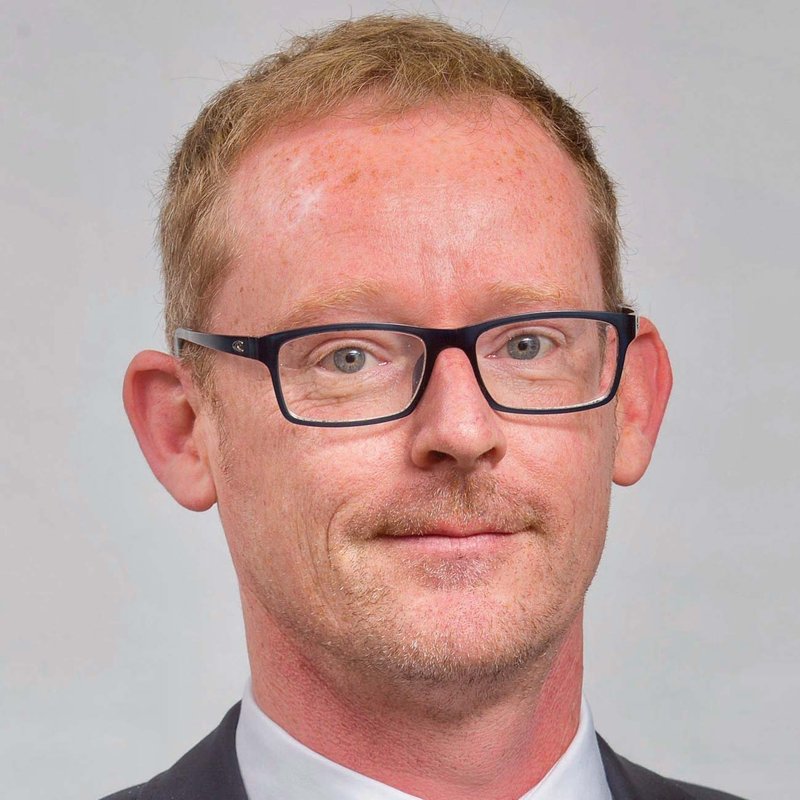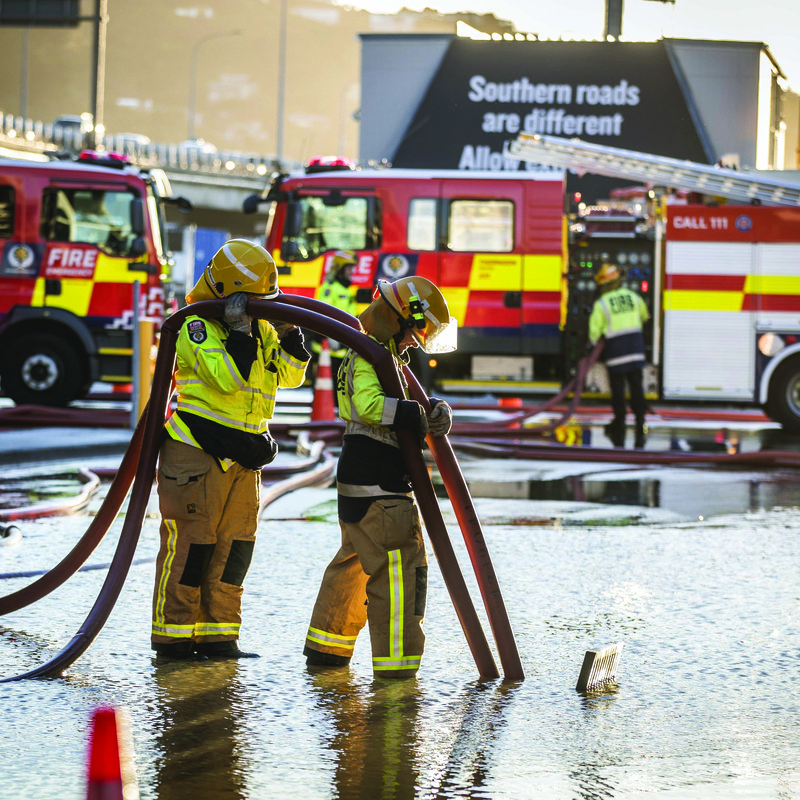17 Mar 2021
After decades of underinvestment in New Zealand’s water infrastructure, there’s now an urgent focus on fixing our three waters – drinking, waste, and stormwater. But just how did things get so bad, what’s already underway to fix things, and what’s the ideal future state?
Havelock North was the nadir of New Zealand’s water woes. Public trust in a water system marred by boil water notices and wastewater spills was already fraying, and the 2016 gastroenteritis outbreak in Hawke's Bay was the last straw. More than 5,500 Havelock North residents became ill and 45 needed hospital care as a result of drinking water contaminated with campylobacter, probably the result of sheep faeces entering the system. Four deaths were later linked to the outbreak, and the official inquiry suggested that “with only slightly different circumstances… the outcome could have been substantially worse”.
The inquiry’s report has been described by one commentator as a “monument to our complacency” when it comes to drinking water safety. The responsible authorities in Havelock North were criticised, but the serious issues identified by the inquiry are widespread and systemic.
A review then a new regulator
Following the 2016 event, the Government commissioned a review of the three waters – drinking, waste, and stormwater. In late 2019, it established a new regulator, Taumata Arowai, to administer and enforce the new drinking water regulatory system, while contributing to improved environmental outcomes from wastewater and stormwater networks. This year, Parliament is expected to enact legislation that will result in sweeping, system-wide changes, including potentially shifting control of water from dozens of councils to a small handful of dedicated cross-regional water authorities. This is not drip-fed reform, it’s a flood, and it’s not before time.
“I haven’t met a single person who disagrees with the need to focus on reforming water quality and supply,” says Taumata Arowai’s establishment CEO, Bill Bayfield.
“There are a huge number of places around New Zealand where water supply is definitely more than just a bit dodgy.”
According to Allan Prangnell, Executive Director of Three Waters for the Department of Internal Affairs, the need for change is urgent.
“Based on the latest information we have, we’re sitting on a $30 billion to $50 billion infrastructure deficit – and that’s without accommodating climate change adaptation, earthquake risk, and population growth.” The massive deficit is due to decades of council underinvestment in water infrastructure.
“Among smaller rural provincial populations, it’s difficult for councils to invest at the scale you need – this is high fixed cost stuff.

Allan Prangnell, Executive Director of Three Waters
About half our pipes are graded as being in ‘unknown condition
“And you’ve also got a lot of metropolitan councils experiencing rapid population growth who have hit their debt limits,” says Allan.
“As well, there’s relatively poor knowledge of the water assets’ condition and performance because they’re all underground. About half our pipes are graded as being in ‘unknown condition’.”
“The view of the government is that this has got beyond the ability of individual councils and communities to resolve. We need a new joined-up approach.”
Meanwhile, however, the Government has allocated $761 million of stimulus funding for immediate investment in water infrastructure and services. Most is going to councils, all of whom have had to agree to participate in the ongoing Three Waters Reform Programme, allocated on a formula of 75 percent population and 25 percent land area.
“The Government has asked councils to give priority to drinking water because that is a public health and safety issue – nearly half the money is going into drinking water supplies,” says Allan.
He adds the bulk will be spent on accelerating renewals programmes. All projects will need to be finished by March 2022, reflecting that this is intended as stimulatory funding. He says: “We think this funding will lead to an additional 2,000 jobs in the sector, and it means that while we look at reforming water services we won’t go backwards – given Covid’s impact on council revenues that was a risk. But it’s not a fix.”

A burst water pipe in 2019 flooded the Interislander ferry terminal carpark in Wellington. Image: Stuff Limited
A fundamental shift
Longer-term, the Government believes safe drinking water will be best achieved by handing control to dedicated entities focused solely on water infrastructure and services. Potentially, the number of authorities providing water to New Zealanders could be reduced from the current 68 to just five. The Water Services Bill also prioritises water source protection and improved environmental outcomes for wastewater and stormwater networks.
At the centre of this new water regime is Taumata Arowai, an independent Crown agent with strong enforcement powers but also a mandate to educate and guide. Bill Bayfield says the authority represents a fundamental shift.
“Rather than an old-fashioned compliance regime, anybody who takes on the responsibility of treating drinking water and wastewater now has a duty of care. We will monitor compliance and support you, but if you fail to deliver safe drinking water, then we will hold you accountable.”

Troy Brockbank
It’s about looking after the mauri, or life force, of water and making sure it isn’t degraded, but rather enhanced and healthy.
Te Mana o te Wai
From a Māori perspective, water is considered toto, or blood – the blood of the Earth mother Papatūānuku.
“It’s not a coincidence that we refer to a significant accumulation of water as a ‘body of water’,” says Troy Brockbank MEngNZ (Te Rarawa, Ngāti Hine, Ngāpuhi), civil engineer and Senior Environmental Consultant for WSP.
Te Mana o te Wai is a concept that refers to this vital importance of water. Founded in mātauranga Māori (indigenous knowledge), it is embedded in the legislation that created Taumata Arowai, which will be supported and guided by a Māori advisory group appointed by the Minister of Local Government.
In essence, it means water needs to be thought of as having value in and of itself, rather than as a resource to be exploited, and its health takes precedence.
“In the past, we’ve over-allocated a lot of our freshwater resource and drinking water sources. Te Mana o te Wai means we have to ensure we minimise water misuse and curb water loss,” says Troy.
He notes it also has implications for how we treat wastewater and stormwater. “It’s about looking after the mauri, or life force, of water and making sure it isn’t degraded, but rather enhanced and healthy. That may involve some form of land treatment.” He gives the example of treated wastewater effluent being passed through a rock apron to enhance and improve mauri before it is discharged to an awa (river) or moana (sea).
Troy continues: “Going forward, engagement between iwi/Māori/mana whenua, and government, local and central, will be key to giving effect to Te Mana o te Wai. This engagement will be a huge step in forming mana enhancing partnerships between these parties, decision making, and implementing successful outcomes with the water industry.”
Crucially, the onus will be on anyone who supplies water beyond a single household. It’s a major expansion of scope from the current regime, which covers townships of greater than 500 people, and will add perhaps 25,000 previously unregistered water suppliers to the mix.
“Well, you can start with my family,” says Bill. “Our bach can supply water to more than our household – it can go to the bach next door as well, so we are potentially a water supplier. How many farms are there in New Zealand where water comes into the homestead then goes out to a farm manager’s house or a packhouse? They’re potentially a water supplier, too.
“So, we are talking about much smaller suppliers who have never been registered or monitored before, and this is going to be a big step up. We’re going to have to work very closely with them to help make it practical and easy for them to lift performance.”
The ultimate goal here is that your drinking water will meet a defined standard no matter where you live. In the case of wastewater, however, regional councils will retain a central role.
“That’s because there’s a huge difference to the standard you might treat wastewater depending on whether you’re going to discharge it into the Mataura River in Southland or the open Canterbury coast or an estuary in the North Island.”
Bill says for wastewater, Taumata Arowai’s role is to look at network and system performance and have an overview of the whole of New Zealand. He adds stormwater is a “trickier” challenge and will require more work. Not that any of this will be easy. Gillian Blythe, Chief Executive of Water New Zealand, argues that the scope of the reforms demands that everyone works collaboratively.
“It will involve sharing the lessons so that we can all avoid mistakes and learn from good experiences. Because this isn’t a competition; it’s about ensuring that all New Zealanders are able to turn the tap on and drink safe water.”
Implications for the engineering profession
Bill and Allan agree the reforms offer new opportunities for engineers. “As well as water quality, we are looking at the network performance – how much water we lose as we transfer it from storage dam to treatment station to homes,” says Bill. “That is an issue engineers are vitally interested in.”
Allan cites the Scotland experience, where water reforms produced 4,000 jobs, many of them engineering roles. “There will be far more specialisation and career pathways in the new water organisations. The other thing is that water will now get the investment it has long needed without having to compete with other council services. That will surely be welcomed by engineers.”





